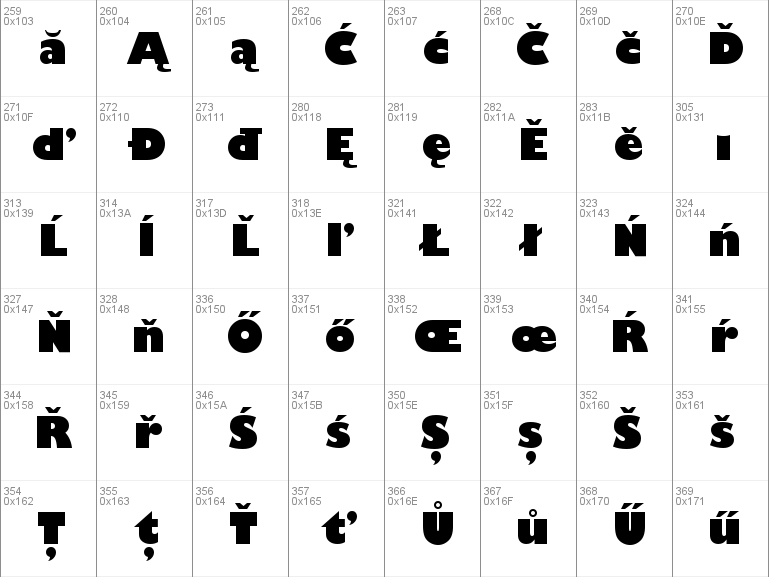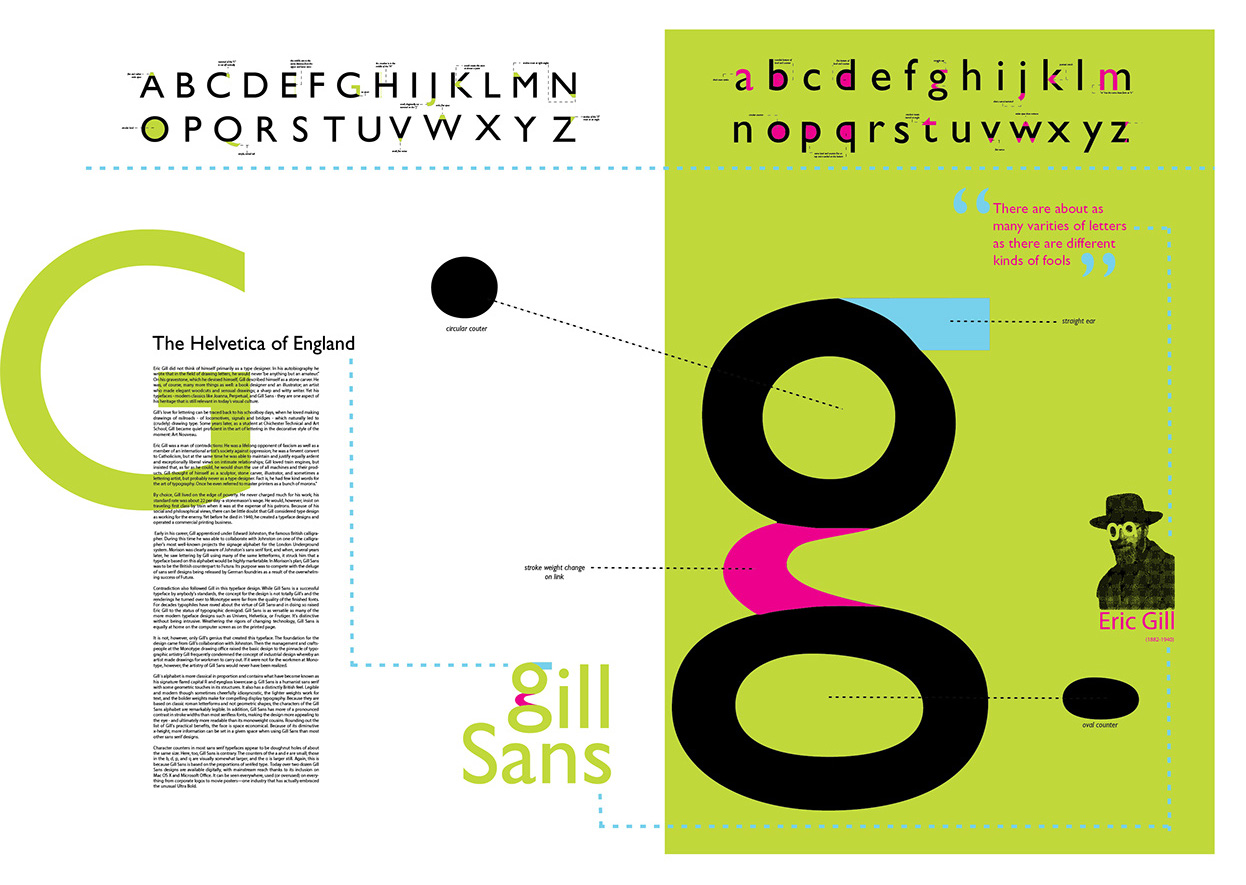


The capital ‘R’ is a signature letter for Gill with its distinctive curved leg. The form of the lowercase a – known as two-storey – and the ‘g’ – likened to a pair of glasses – are traditionally associated with serif letters. The designs of lowercase ‘a’, ‘g’ and capital ‘R’ are not typical of this category of sans serifs. It retains subtle contrasts in stroke widths that make it more readable in continuous text than mono-weight type.

Gill Sans is a sans serif design that has the proportions of classical roman letters. Two of Monotype’s bestselling typeface families were Perpetua and Gill Sans, both original Gill designs, that developed from his experience with lettering on paper and stone. He was a prominent artist-craftsman who was awarded the title of Royal Designer for Industry. Gill is arguably the most important British type designer of the twentieth century. The Monotype Corporation successfully commissioned Eric Gill (1882-1940) to produce nine original typefaces, which over the years generated 40 series for the Monotype hot-metal typeface library. The punch was stamped into a piece of phosphor bronze that made a matrix from which type could be cast. However, in the case of Caslon Series 128, there were sets of patterns made for each individual size. If a metal typeface was produced in five sizes, for example, there were not necessarily new patterns made for each size. The pattern was used as a guide when cutting punches on a punch-cutting machine. They used to be made in two sizes: ¼ size of the drawing for type sizes up to 24pt, and 3/8 size of the drawing for type sizes over 24pt. It bears lines denoting clearance and sidewalls, also figures denoting series and size of type. It is about 3" square and ¼" thick, having a character raised 1/16" on its face. Manufactured by Monotype Corporation.Ī Monotype pattern is a copper-faced plate bearing, in relief, the shape of a right-reading character or symbol. Pattern for Gill Sans (Typeface Series number: 262), 12 point.


 0 kommentar(er)
0 kommentar(er)
